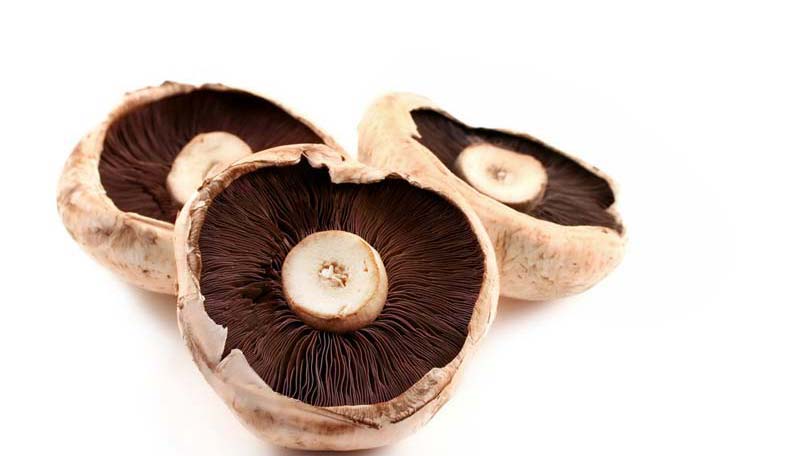
Portobello mushrooms have sprung up on restaurant menus all over North America. And why not? They have excellent nutritional value and, with their large size, Portobellos are hearty enough for a low fat entrée. I always have Portobellos on hand during barbecue season because they are positively delicious when grilled. Since I eat so many of them, I wondered if I should start growing them myself. I did a little digging, and here’s what I learned about growing mushrooms.
Mushrooms, being fungi, do not grow like a regular garden vegetable. They are generated from spores, not seeds. They contain no chlorophyll. When growing, their nutrients are delivered from the medium they are grown in and absorbed through the root system supporting the mushroom, which is called the mycelium. The fruit of the mycelium is the mushroom cap and stem that we are used to seeing in grocery stores.
The medium varies, depending on the type of mushroom. Sawdust, manure and compost are all commonly used as substrate in mushroom farming. In order for mushrooms to grow, the medium must contain mushroom spores. But getting the spores in there is not an easy task. The spores from a mushroom must be collected and then used to inoculate grains or seeds to create spawn (the equivalent of seeds). The term “inoculate” has connotations of a doctor’s office, and the comparison is a reasonable one: in commercial mushroom farming, the entire process of collecting spores and growing spawn is done in a sterile lab. As such, growing mushrooms from scratch may not be the best option for either the casual gardener or the hardcore green thumb.
Mushroom Growing Kits
If you are interested in growing your own mushrooms, you can order kits that contain pre-inoculated media or that require you to do the inoculation yourself. There are many sources available online – a simple Google search for mushroom growing kits will lead to many vendors. The kits range from the low end box of mycelium and medium for indoor growing (about $30 – $40), to much higher end (and more complicated) “systems” that enable you to inoculate your own substrate, for anywhere between $300 and $500.
A look at the low end kit demonstrates the general growing process. After receiving your kit, you must maintain a proper temperature and moisture level throughout the incubation period that is required for the mycelium to colonize the substrate. This process usually takes a week to ten days. The next step is to force the fruiting of the mycelium by keeping the kit moist and, in the case of Portobellos, dark. (The requirement for darkness, often thought to be common to all mushrooms, is actually unique to Portobellos and their relatives the White and Crimini mushroom. Other varieties, like Shiitake and Oyster mushrooms, require some light.)
Most kits have a tent to retain moisture, but you do need to spray regularly. And you need to use the right kind of water – chlorine is a no-no, so if you must use tap water, you need to let it sit overnight so the chlorine can evaporate.
Most kits produce mushrooms within a couple of weeks. Each harvest is called a flush and you can expect about two or three flushes per kit. Portobello kits yield about 3-6 pounds of mushrooms over three months.
If, after trying an indoor kit, you decide to get really serious about growing your own gourmet mushrooms, you can try the even more labor-intensive outdoor mushroom log. I, on the other hand, will continue to harvest my Portobellos from the crop at the local grocery store.

